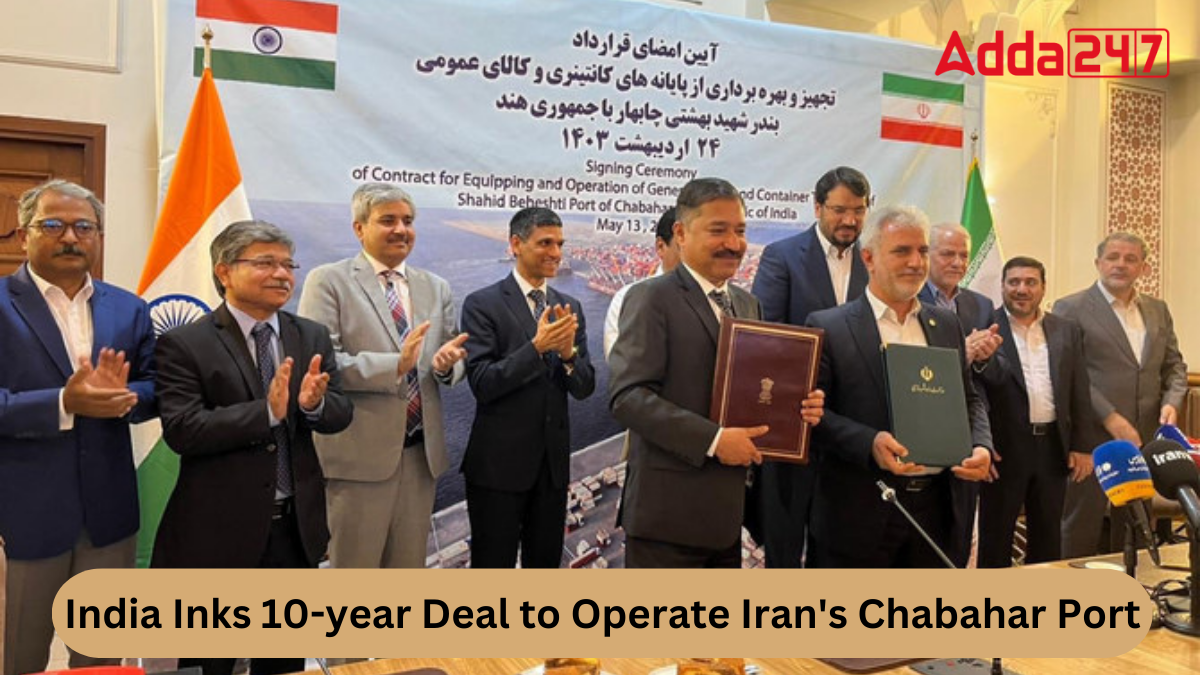India and Iran Ink Chabahar Deal: A Strategic Leap for Regional Trade

Introduction: A Long-Awaited Milestone
India and Iran have officially signed a long-pending agreement to develop and operate the Chabahar port in Iran, marking a significant breakthrough in regional trade and connectivity. This agreement, finalized in 2025, solidifies India’s role in managing part of the port and paves the way for a strategic transport corridor linking South Asia with Central Asia, bypassing Pakistan.
The move comes after years of delays due to geopolitical tensions, international sanctions on Iran, and shifting diplomatic priorities. Now that the deal is in place, both nations aim to use Chabahar as a linchpin for economic and strategic partnerships.
What is the Chabahar Port Project?
Located on the southeastern coast of Iran, the Chabahar port is strategically positioned along the Gulf of Oman. It provides India with direct access to Afghanistan and Central Asia, circumventing Pakistan. For Iran, the port offers a crucial outlet for trade amid its strained relations with the West.
India has already invested in the construction of berths and the surrounding infrastructure, but until now, a formal operating agreement had remained elusive. The current deal ensures Indian management of a key terminal at Chabahar for a ten-year period, extendable by mutual consent.
Strategic Importance for India
India’s interest in Chabahar is both economic and geopolitical:
- Regional Access: The port provides India with a viable route to Afghanistan and the landlocked nations of Central Asia, which hold vast reserves of natural resources.
- Energy Security: Through Chabahar, India can facilitate smoother oil and gas imports from Iran and Central Asian countries.
- Countering China-Pakistan Axis: The port offers a counterbalance to Pakistan’s Gwadar port, which is being developed by China under the China-Pakistan Economic Corridor (CPEC).
Iran’s Gains: Breaking Isolation
For Iran, the Chabahar deal represents a chance to diversify trade partners and reduce dependency on traditional maritime routes that pass through politically sensitive areas.
Amid fluctuating relations with the West and ongoing economic sanctions, Iran views Chabahar as a vital economic gateway. Indian involvement brings credibility and potential investment that can revitalize the regional economy of Sistan-Baluchestan province, one of Iran’s most underdeveloped areas.
Connectivity Projects Linked to Chabahar
The Chabahar agreement complements several other infrastructure and connectivity initiatives:
- International North-South Transport Corridor (INSTC): This 7,200-km multimodal network links India to Russia and Europe via Iran and Central Asia.
- Railway to Afghanistan: India is funding rail lines from Chabahar to Zahedan (Iran) and potentially further to Afghanistan’s border.
- Road Links: Upgraded road networks from Chabahar to Central Asia will enhance the movement of goods, especially agricultural products, minerals, and industrial goods.
Diplomatic Dimensions: A Balancing Act
India has had to walk a tightrope in signing this deal. While strengthening ties with Iran, India must also manage its strategic partnerships with the United States and Gulf countries, many of whom view Iran with suspicion.
However, the Biden administration and other Western powers have shown cautious support, viewing Chabahar as a facilitator of humanitarian trade and regional stability, especially in Afghanistan.
Economic Opportunities for Indian Businesses
Indian companies in sectors such as logistics, shipping, infrastructure, and engineering stand to benefit from the Chabahar deal:
- Shipping Lines: Indian shipping firms can expand operations in Iran and beyond.
- Export Markets: Indian goods can reach Central Asia more easily, opening new markets for textiles, pharmaceuticals, and machinery.
- Investment Zones: Special economic zones near Chabahar can attract Indian SMEs and large enterprises.
Regional Reactions: Support and Skepticism
- Afghanistan: Welcomed the development, highlighting how Chabahar can enhance trade and humanitarian aid.
- Pakistan: Has raised concerns, viewing the deal as a strategic encirclement by India.
- China: Continues to promote Gwadar as an alternative, but is closely monitoring India’s growing presence in the region.
Challenges Ahead
Despite the breakthrough, the road ahead is not without hurdles:
- Sanctions: While some waivers exist for Chabahar, the broader sanctions regime on Iran remains a challenge.
- Security Concerns: The region is prone to instability and attacks by insurgent groups.
- Logistical Bottlenecks: Infrastructure needs to be upgraded further for seamless operations.
Conclusion: A New Chapter in Indo-Iranian Relations
The signing of the Chabahar agreement is a landmark moment that reflects India’s growing confidence on the global stage. It signals a commitment to multilateralism, regional stability, and strategic autonomy.
For Iran, the deal offers a vital economic lifeline and a diplomatic win. As global dynamics shift, Chabahar may well become a cornerstone of a new trade architecture in Eurasia—linking markets, cultures, and opportunities across continents.
By overcoming political and logistical obstacles, India and Iran have taken a bold step forward—one that may reshape the economic map of the region for years to come.
Visit Edge Times Homepage For More News
Read Blogs From Our Blog Website
Top 10 Movies On Jio Hotstar App

Samsung One UI 7 Update Release Date In India

Best Dog Food For Shih Tzu

Visit To Our Blog Channel To Read Interesting Blogs

![India-Inks-10-year-Deal-to-Operate-Irans-Chabahar-Port[1]](https://edgetimes.me/wp-content/uploads/2025/05/India-Inks-10-year-Deal-to-Operate-Irans-Chabahar-Port1.png)
Leave a Reply